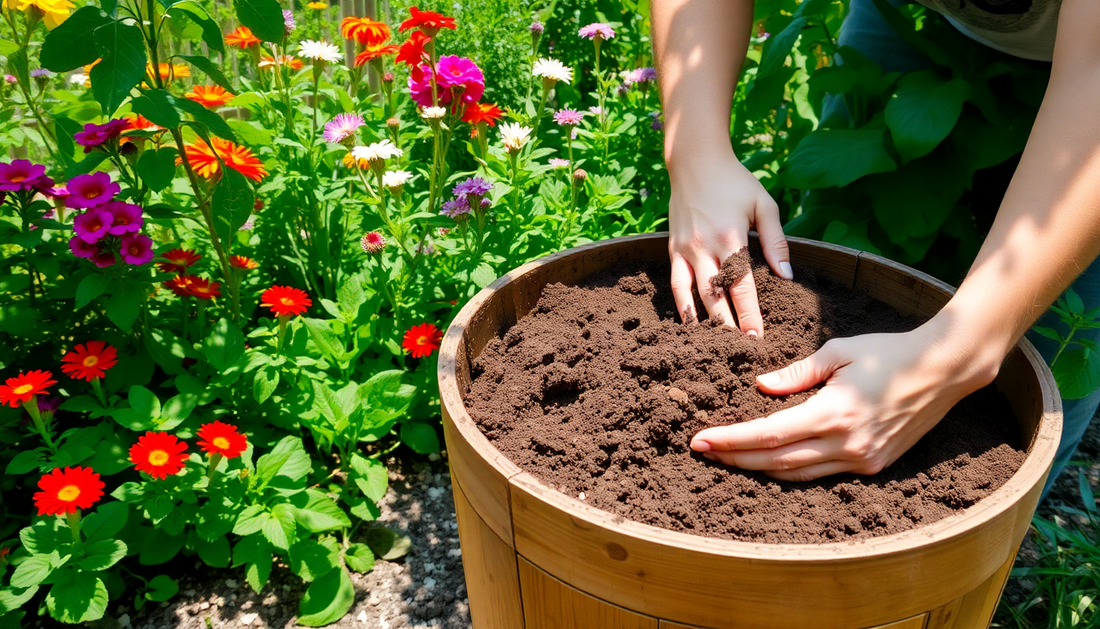
Ditch the Chemicals: How to Make Your Own Potting Mix for a Thriving Garden
As a passionate gardener, I've always been on the lookout for ways to create a healthier, more sustainable environment for my plants. One of the biggest challenges I've faced is finding the right potting mix - one that is free from harmful chemicals, yet still provides the necessary nutrients and structure for my plants to thrive. After years of trial and error, I'm excited to share with you my foolproof method for making your own chemical-free potting mix.
The Importance of a Healthy Soil Mix
The soil in which your plants are grown plays a crucial role in their overall health and vitality. Traditional potting mixes often contain synthetic fertilizers, pesticides, and other additives that can be detrimental to both your plants and the environment. These chemicals can leach into the soil, contaminate groundwater, and even harm beneficial microorganisms that are essential for a thriving garden.
By creating your own potting mix, you can ensure that your plants are getting the nutrients they need without exposing them to harmful substances. Not only will this result in healthier, more vibrant plants, but it will also contribute to the overall sustainability of your garden ecosystem.
Ingredients for a Homemade Potting Mix
The great thing about making your own potting mix is that you can tailor it to the specific needs of your plants. Here are the key ingredients you'll need to create a nutrient-rich, chemical-free soil:
Compost
Compost is the foundation of a healthy potting mix. It provides essential nutrients, improves soil structure, and helps retain moisture. You can use a variety of compost sources, such as well-rotted leaf litter, aged manure, or even your own homemade compost.
Perlite or Vermiculite
These lightweight, porous materials help to improve drainage and aeration in the soil, preventing waterlogging and ensuring that your plants' roots have access to oxygen.
Coir or Peat Moss
Coir or peat moss help to retain moisture and provide structure to the soil. They also help to balance the pH, which is important for many plants.
Bone Meal or Rock Phosphate
These natural sources of phosphorus help to promote strong root growth and overall plant health.
Kelp Meal or Seaweed Extract
Kelp and seaweed are rich in micronutrients and growth-promoting compounds, which can give your plants a boost.
Dolomitic Lime
Lime helps to adjust the pH of the soil, ensuring that your plants can effectively absorb the nutrients they need.
By combining these ingredients in the right proportions, you can create a potting mix that is tailored to the specific needs of your plants, without relying on synthetic chemicals.
Step-by-Step Guide to Making Your Own Potting Mix
Now that you know the key ingredients, let's dive into the step-by-step process of creating your own chemical-free potting mix:
Step 1: Gather Your Ingredients
Collect all the necessary ingredients, making sure to have them in the right quantities based on the size of your garden or the number of containers you'll be filling.
Step 2: Mix the Dry Ingredients
In a large container or on a clean surface, start by mixing the dry ingredients: compost, perlite or vermiculite, coir or peat moss, bone meal or rock phosphate, and kelp meal or seaweed extract. Stir these components together until they are evenly distributed.
Step 3: Add the Lime
Sprinkle the dolomitic lime over the dry mixture and mix it in thoroughly. This will help to adjust the pH of the soil to the optimal range for your plants.
Step 4: Moisten the Mixture
Gradually add water to the dry mixture, stirring continuously, until the soil is moist but not sopping wet. The ideal moisture level should be similar to a wrung-out sponge.
Step 5: Let the Mixture Sit
Once you've achieved the desired moisture level, allow the potting mix to sit for a few hours or even overnight. This will give the ingredients time to fully incorporate and the pH to stabilize.
Step 6: Use Your Homemade Potting Mix
Your chemical-free potting mix is now ready to use! Fill your containers or garden beds with the mixture, and plant your desired seeds or seedlings. Be sure to water the soil thoroughly after planting to help the roots establish.
The Benefits of a Homemade Potting Mix
By taking the time to create your own potting mix, you'll enjoy a host of benefits for your garden:
- Improved Plant Health: Without the presence of harmful chemicals, your plants will be able to thrive and reach their full potential.
- Enhanced Soil Structure: The combination of compost, perlite/vermiculite, and coir/peat moss will create a soil structure that is ideal for plant growth, with excellent drainage and moisture retention.
- Increased Nutrient Availability: The natural sources of nutrients in your homemade mix will be readily available to your plants, ensuring they get the nourishment they need.
- Reduced Environmental Impact: By avoiding synthetic fertilizers and pesticides, you'll be contributing to a more sustainable gardening ecosystem and reducing your carbon footprint.
- Cost Savings: Making your own potting mix can be more cost-effective in the long run, as you'll be able to reuse and replenish the ingredients as needed.
So, what are you waiting for? Ditch the chemicals and start creating your own chemical-free potting mix for a thriving, eco-friendly garden. Your plants (and the planet) will thank you!






No comments